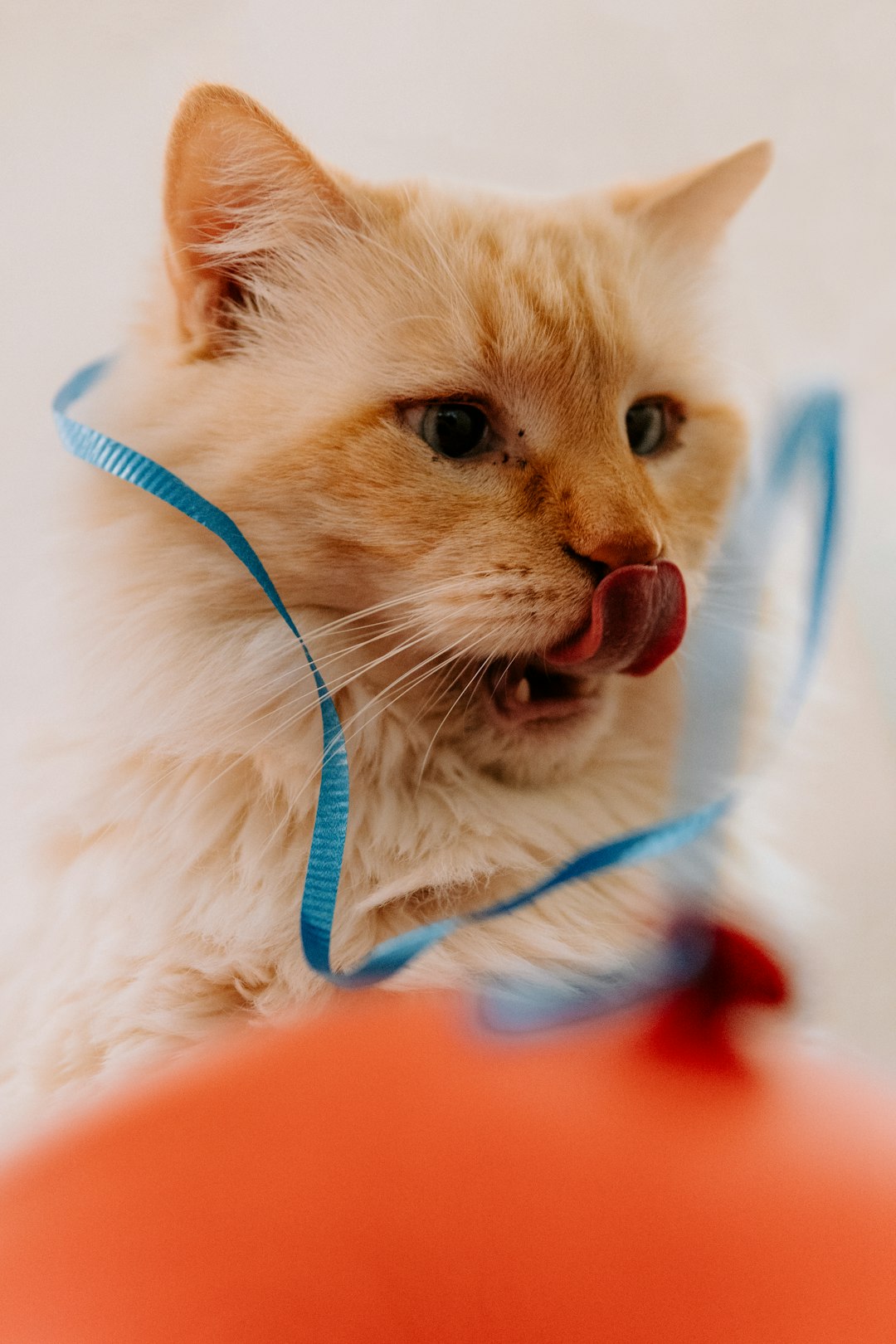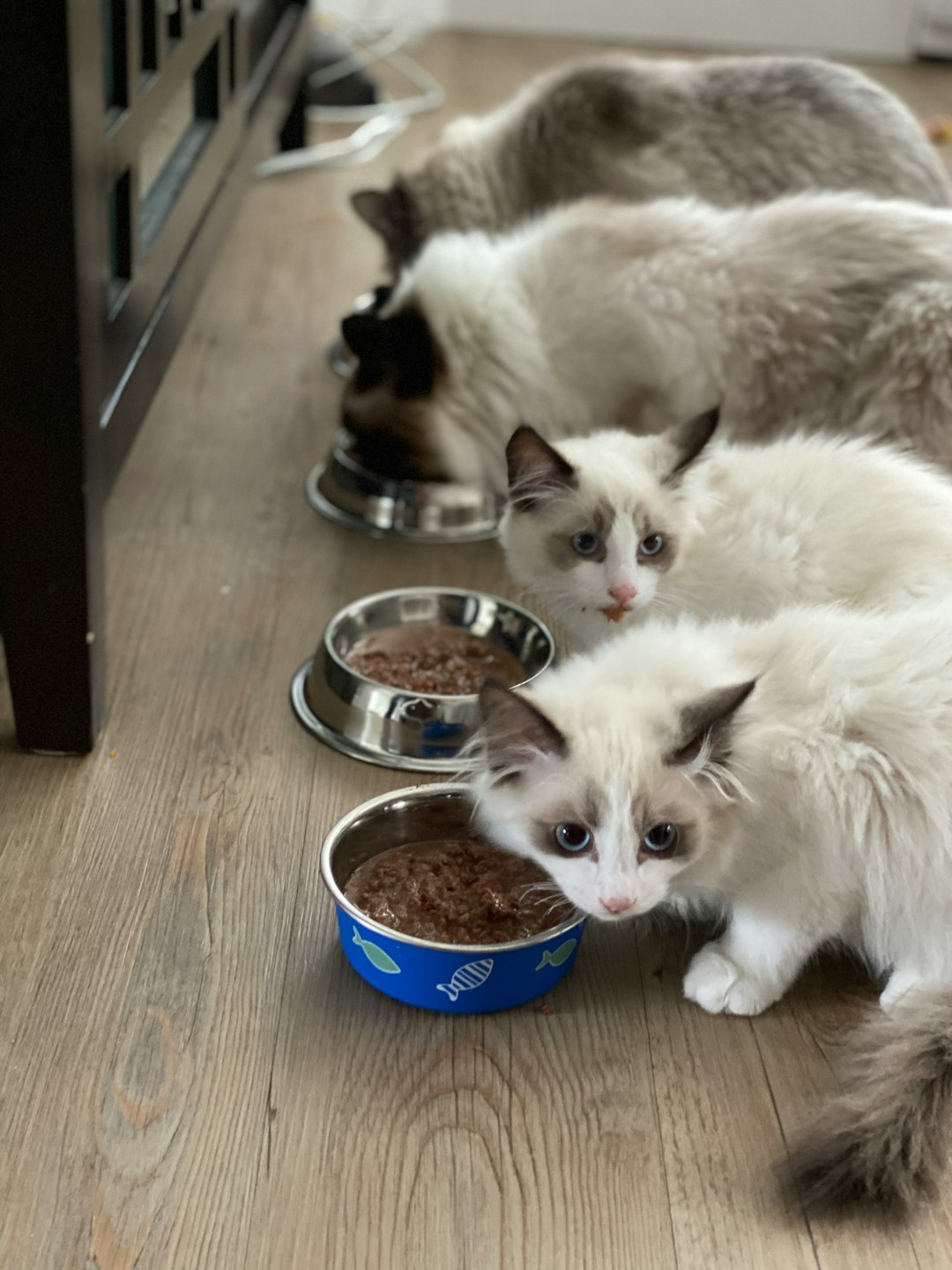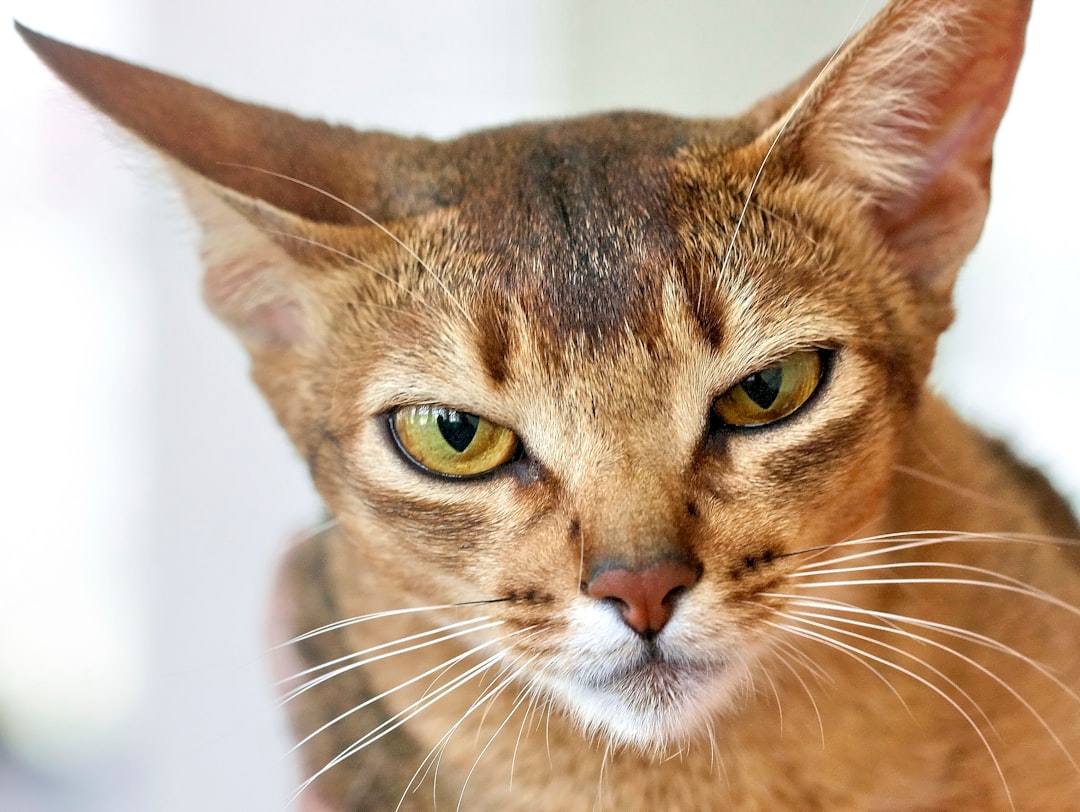Rapid breathing in cats can be alarming for pet owners, often leading to the pressing question: Why is my cat breathing fast? Understanding your feline friend’s respiratory patterns is essential for their health and well-being. In this comprehensive guide, we will explore the normal breathing rates for cats, delve into common causes of rapid breathing, and highlight the signs of respiratory distress to watch for. Moreover, we will discuss how environmental factors, anxiety, and various health issues can affect your cat’s breathing. By observing your pet’s behavior and staying informed, you can take proactive steps to safeguard their respiratory health and know when to seek veterinary help. Join us as we uncover the vital factors influencing your cat’s breathing patterns, ensuring you can provide the best care possible for your furry companion.
Understanding Normal Cat Breathing Rates
When it comes to feline health, understanding normal breathing rates is crucial. Typically, a relaxed cat breathes between 20 to 30 breaths per minute when at rest. However, factors such as activity level and stress can influence these rates.
What is the average breathing rate in cats?
To monitor your cat’s respiratory health, it’s important to establish a clear baseline. Here’s a quick overview:
| Cat Activity Level | Breathing Rate (Breaths per Minute) |
|---|---|
| At rest | 20 – 30 |
| During mild activity | 30 – 40 |
| During intense activity | Up to 60 |
If you notice a consistent rate exceeding 30 breaths per minute at rest, this may raise a red flag and warrant further inspection.
How does cat size and breed affect breathing rates?
The size and breed of your cat play significant roles in defining their respiratory patterns. For example:
| Cat Size/Breed | Normal Breathing Rate |
|---|---|
| Small/Breed Specific | 25 – 30 |
| Medium Breeds | 20 – 25 |
| Large Breeds | 15 – 20 |
Understanding these nuances allows you to better gauge what is considered normal for your feline companion. Remember that several factors contribute to a cat’s respiratory health, but maintaining familiarity with their average rate can help you determine whether to ask, “Why is my cat breathing fast?” Always keep an eye on any significant changes that might indicate an underlying condition.
Why is My Cat Breathing Fast? Common Causes
Understanding the reasons behind rapid breathing in cats is essential for every pet owner. Several factors can contribute to this condition, and identifying them can help you take appropriate action.
Identifying stress as a factor
Cats are sensitive creatures and can experience anxiety or stress for various reasons. Stressors such as loud noises, changes in their environment, or even the introduction of new pets can lead to increased heart rates and fast breathing. Here are some common stress-related triggers:
| Stress Trigger | Description |
|---|---|
| Loud Noises | Thunderstorms, fireworks, or construction |
| New Environment | Moving houses or remodeling |
| Changes in Routine | Different feeding times or alterations in daily playtime |
| Introduction of New Pets | Jealousy or territorial issues |
| Lack of Safe Spaces | Inadequate hiding spots for comfort |
Understanding health conditions that lead to rapid breathing
In addition to stress, various health issues may cause your cat to breathe rapidly. These conditions can range from minor to serious, so it is crucial to monitor your pet closely. Certain ailments that may contribute include:
| Health Condition | Symptoms |
|---|---|
| Respiratory infections | Coughing, nasal discharge |
| Heart disease | Weakness, lethargy |
| Asthma | Coughing fits, wheezing |
| Obesity | Excessive panting, fatigue |
| Pain or discomfort | Vocalization, restlessness |
Recognizing if your feline friend is experiencing fast breathing due to stress or health conditions can help you respond appropriately. Always consult with your veterinarian for accurate diagnosis and treatment options tailored to your cat’s needs.
Signs of Respiratory Distress in Cats
Understanding the signs of respiratory distress in cats is crucial for every cat owner. Rapid or shallow breathing can be a sign that your feline friend is experiencing serious health issues. Being able to identify additional symptoms can aid in the assessment of their condition.
Recognizing Other Symptoms of Distress
Cats communicate their discomfort through various signs. Look out for the following symptoms that may accompany fast breathing:
| Symptom | Description |
|---|---|
| Open-mouth breathing | Breathing with the mouth open can indicate severe distress. |
| Coughing or wheezing | These sounds can suggest issues like asthma or lung disease. |
| Blue-tinged gums | This may indicate a lack of oxygen, a serious condition. |
| Lethargy | A noticeable drop in energy levels can signal illness. |
| Purring or meowing changes | Changes in vocalization may reflect anxiety or pain. |
When Should You Be Concerned About Fast Breathing?
Why is my cat breathing fast? If you observe your cat breathing quickly, it could be an indication of a serious underlying health issue. Seek veterinary help if:
- Breathing rate is above 30 breaths per minute at rest.
- Your cat exhibits any of the aforementioned symptoms alongside rapid breathing.
- You notice any sudden changes in behavior, such as hiding or avoiding interaction.
- There are persistent or unexplained noises while breathing.
Prompt attention to these signs can make a significant difference in your cat’s health. Always err on the side of caution, and consult your veterinarian if any concerns arise regarding your cat’s breathing or behavior.
Environmental Factors Influencing Cat Breathing
Environmental factors can significantly influence a cat’s breathing pattern. Understanding these elements is vital for any cat owner who may wonder, “Why is my cat breathing fast?” Below are some key influences.
How temperature and humidity play a role
The temperature and humidity levels in your cat’s environment can have profound effects on their respiratory health. Cats thrive in a comfortable, stable climate. Extreme heat can lead to rapid breathing as they struggle to cool down. In contrast:
| Condition | Effect on Breathing |
|---|---|
| High temperatures | Increased respiratory rate |
| Low temperatures | Potential for breathing difficulty due to cold air |
| High humidity | Can make breathing harder, leading to faster rates |
It’s essential to maintain a moderate temperature and avoid extreme conditions to ensure your feline friend remains comfortable and healthy.
Impact of air quality on cat respiratory health
Air quality is another crucial factor affecting cat breathing. Pollutants such as dust, smoke, and allergens can lead to irritation and respiratory distress. Pay attention to the following:
| Air Quality Issue | Potential Impact on Breathing |
|---|---|
| Dust and allergens | Can cause sneezing or fast breathing |
| Smoke | Harsh irritant leading to respiratory issues |
| Poor ventilation | Can exacerbate pre-existing conditions |
A clean, well-ventilated environment reduces the risk of respiratory problems in cats. Regularly check and improve the air quality in your home to help promote better health for your furry friend.
By being aware of these environmental factors, you can take proactive steps to ensure your cat breathes comfortably.
Understanding Anxiety and Stress in Cats
Cats are sensitive creatures, and various factors can induce anxiety and stress, resulting in substantial changes in their behavior and breathing patterns. It’s essential for cat owners to identify these stressors and recognize the symptoms, especially the question “Why is my cat breathing fast?” which may indicate underlying anxiety.
Common Stressors for Cats
| Stressor | Description |
|---|---|
| Changes in Environment | Moving to a new home, rearranging furniture, or introducing new pets can be unsettling. |
| Loud Noises | Sudden sounds, like thunderstorms or fireworks, can instigate fear and anxiety. |
| Lack of Routine | Cats thrive on consistency; sudden changes in their feeding schedule or daily activities can stress them out. |
| Human Interactions | Frequent or harsh handling by unfamiliar people may cause distress in some cats. |
| Health Issues | Physical discomfort or illness can lead to increased anxiety levels in cats. |
How to Recognize Stress-Related Rapid Breathing
Identifying stress-related rapid breathing can be crucial. Look for these signs:
- Panting: Cats might breathe heavily, similar to panting in dogs.
- Restlessness: Anxious cats may exhibit pacing or an inability to settle down.
- Hiding: Increased desire to hide away can indicate stress.
- Vocalization: Unusual meowing or yowling may signal that your cat is feeling anxious.
Understanding these clues can help you address your cat’s needs effectively, fostering a calm environment. If you find yourself pondering “Why is my cat breathing fast?”, consider the emotional well-being of your feline friend in addition to their physical health.
Health Issues That Can Cause Rapid Breathing
Respiratory infections and their symptoms
Rapid breathing in cats can often be linked to respiratory infections. These conditions may arise from viruses, bacteria, or even fungi, leading to inflammation and obstruction of the airways. Common symptoms associated with respiratory infections include:
| Symptom | Description |
|---|---|
| Coughing | Frequent and persistent cough can indicate irritation. |
| Nasal discharge | Mucus or pus discharge can show respiratory distress. |
| Wheezing | A whistling sound when breathing suggests narrowed airways. |
| Labored breathing | Difficulty in breathing usually indicates a severe condition. |
If you observe these symptoms alongside fast breathing, it’s vital to consult your veterinarian for proper diagnosis and treatment.
Heart conditions that lead to fast breathing
Another significant health issue that can cause rapid breathing is heart disease. Various cardiovascular conditions may manifest in increased respiratory rates. Some heart-related problems include:
| Heart Condition | Symptoms |
|---|---|
| Hypertrophic Cardiomyopathy | Common in cats; may cause fainting or lethargy. |
| Congestive Heart Failure | Fluid builds up in the lungs, leading to rapid breathing. |
| Heart Murmurs | Abnormal heart sounds may indicate underlying issues. |
Why is my cat breathing fast? If the rapid breathing is accompanied by lethargy, decreased appetite, or coughing, it is essential to seek veterinary assistance. Early detection can lead to better outcomes and improved quality of life for your feline friend. Always prioritize regular check-ups to monitor your cat’s heart health.
The Role of Physical Activity in Cat Breathing Patterns
How exercise influences breathing rates
Physical activity significantly impacts a cat’s breathing patterns. When cats engage in play or other forms of exercise, their heart rate and respiration naturally increase. During physical exertion, cats may breathe faster to meet their body’s elevated oxygen demands. This temporary increase is normal and suitable for their overall health.
Here’s a quick overview:
| Activity Level | Breathing Rate (Breaths/Minute) |
|---|---|
| Resting (Quiet) | 20-30 |
| Light Play (Chasing Toys) | 30-50 |
| Vigorous Play (Running) | 50+ |
It is crucial to ensure that after exercise, your cat returns to a normal breathing rate. If prolonged rapid breathing occurs, it might indicate other underlying issues.
Signs your cat may need more activity
Cats, especially indoor ones, may not get enough physical stimulation. Observing specific behaviors can indicate that your cat requires more activity:
- Lethargy: Frequently sleeping or resting and lacking enthusiasm for play can be a sign.
- Overweight: If your cat is gaining weight, it’s a clear indicator they need more movement.
- Destructive Behavior: Increased scratching or knocking down items suggests boredom and excess energy.
- Excessive Meowing: This could indicate a desire for interaction and play.
In summary, keeping a close watch on your cat’s activity levels not only promotes a healthy lifestyle but also impacts their respiratory health. If you find yourself wondering, “Why is my cat breathing fast?”, consider their activity levels as a potential factor.
Observing Your Cat’s Behavior for Clues
How to Monitor Your Cat’s Breathing at Home
To properly assess your cat’s well-being, start by monitoring its breathing patterns. Why is my cat breathing fast? This question can often be answered by observing behaviors that accompany changes in breathing. A relaxed cat should have a breathing rate of 20-30 breaths per minute. To check this, you can gently count the number of breaths for a minute while your cat is resting. Keep an eye out for any deviations from this normal range. Here’s a quick table to help you track important observations:
| Behavior Indicator | What to Observe |
|---|---|
| Breathing Rate | Count breaths per minute |
| Positioning | Observe if the cat is slouched or sitting upright |
| Mouth Breathing | Check if the cat is breathing with an open mouth |
| Vocalizations | Listen for unusual sounds (e.g., wheezing or coughing) |
Behavioral Changes That May Indicate Health Problems
Behavioral changes can often be the first sign that something may be wrong. Rapid breathing may accompany specific signs to help you interpret your cat’s condition. Look for the following behaviors:
- Lethargy: If your cat is less active than usual, it may indicate distress.
- Loss of Appetite: A disinterest in food can be troubling, especially when paired with fast breathing.
- Hiding: Is your cat seeking solitude more than normal? This may indicate stress or illness.
- Excessive Grooming: This can be a sign of anxiety or discomfort.
By setting aside time each day to observe your cat, you can track any changes that could lead to a deeper understanding of why your feline companion might be experiencing rapid breathing.
When to Seek Veterinary Help for Fast Breathing
Understanding emergencies regarding fast cat breathing
Noticing your cat breathing rapidly can be alarming, and understanding when to seek veterinary help is crucial. Why is my cat breathing fast? While some causes may be benign, others could indicate a serious health issue. Fast breathing can be categorized as an emergency when:
| Symptoms | Action Required |
|---|---|
| Blue or pale gums | Immediate veterinary attention needed |
| Labored or noisy breathing | Emergency visit is crucial |
| Persistent rapid breathing | Consult your veterinarian immediately |
| Lack of energy or lethargy | Schedule a vet appointment promptly |
If your cat exhibits any of these symptoms alongside rapid breathing, do not hesitate to contact your veterinarian or an emergency animal clinic.
Preparing for a vet visit to discuss rapid breathing
When visiting the vet about your cat’s rapid breathing, preparation can ensure a more effective assessment. Here’s how to prepare:
- Document Symptoms: Note when you noticed the rapid breathing, duration, and any additional symptoms (like coughing or lethargy).
- Gather Medical History: Bring any past veterinary records, current medications, or recent changes in diet that may help your vet assess the situation more thoroughly.
- Create a List of Questions: Preparing questions like “What could cause this?” or “What tests will be performed?” can lead to a more productive conversation.
It is essential to remain calm; your veterinarian will guide you through diagnosing the underlying cause of your cat’s fast breathing. Understanding when and how to seek help can make a significant difference in your cat’s health and wellbeing.
Preventative Measures for Cat Respiratory Health
Creating a stress-free environment
A calm environment is essential for your cat’s overall well-being. Cats thrive in spaces that are quiet, familiar, and free from sudden changes. Here are some strategies to help minimize stress and promote healthy breathing:
| Tip | Description |
|---|---|
| Designate a safe zone | Provide a cozy, enclosed space with comfortable bedding. |
| Limit noise | Keep loud appliances or entertainment to a minimum. |
| Maintain routine | Cats appreciate predictability; stick to a consistent schedule for feeding and playtime. |
| Provide enrichment | Introduce toys and scratching posts to keep your cat engaged. |
Regular health check-ups for early detection
Routine veterinary visits play a crucial role in maintaining your cat’s respiratory health. Regular check-ups enable early detection of any underlying health issues that may cause fast breathing. Key aspects include:
| Check-up Aspect | Importance |
|---|---|
| Vaccinations | Keep vaccinations up to date to prevent respiratory infections. |
| Dental health | Oral health impacts overall health; dental issues can affect breathing. |
| Assess weight | Maintaining a healthy weight reduces strain on the respiratory system. |
| Listen for abnormal sounds | A vet can detect irregular heartbeats or lung sounds that indicate problems. |
By prioritizing a stress-free environment and regular health check-ups, you can significantly reduce the risk of respiratory issues in your cat. Doing so not only answers the question, “Why is my cat breathing fast?” but also enhances their overall quality of life.
Frequently Asked Questions
What are the common causes of rapid breathing in cats?
Rapid breathing in cats, also known as tachypnea, can be caused by a variety of factors. Common causes include anxiety or stress, especially in new environments or during loud noises. Medical conditions such as asthma, heart disease, or respiratory infections may also lead to increased breathing rates. Additionally, obesity or high temperatures can cause a cat to breathe heavily as they try to cool down. It’s important to observe accompanying symptoms to help identify the root cause.
When should I be concerned about my cat’s breathing rate?
If your cat is breathing rapidly, it’s crucial to monitor their behavior closely. If the rapid breathing persists for more than a few minutes, or if it’s accompanied by other symptoms like coughing, lethargy, or difficulty in breathing, you should seek veterinary attention immediately. Rapid breathing can indicate serious health issues that require prompt diagnosis and treatment.
How can I tell if my cat is experiencing distress due to fast breathing?
Cats may exhibit signs of distress in various ways, especially when they are breathing rapidly. Look for indicators such as wide-open eyes, dilated pupils, and abnormal vocalizations. Additionally, if your cat is hiding, trembling, or showing changes in appetite or behavior, it may be a sign that the rapid breathing is causing distress. Always consult a veterinarian if you notice these concerning signs.
Are there any home remedies to help my cat’s rapid breathing?
While it’s essential to consult a veterinarian for rapid breathing, ensuring your home environment is calm and stress-free may help. Providing a quiet space, reducing loud noises, and maintaining a comfortable temperature can contribute to your cat’s well-being. However, avoid attempting any home remedies without professional guidance, as rapid breathing can be a sign of serious health issues that need medical intervention.
Can rapid breathing in cats be a sign of an emergency?
Yes, rapid breathing can indeed indicate a medical emergency, depending on the accompanying symptoms. If your cat shows signs such as labored breathing, bluish gums, lethargy, or distress, these are urgent signals that you should contact your veterinarian or an emergency animal clinic immediately. Quick medical intervention can be critical for conditions that cause rapid breathing.



